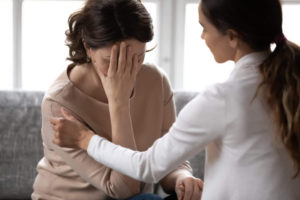It’s amazing how many of us will experience lower back pain at some time in our lives. Whether you experience chronic low back pain or have intermittent episodes of an aching back, there are a wide array of treatment options that can bring you pain relief.
Many people have jobs that require them to bend down or lift heavy objects, and still, others might get a slipped disk in their spine from working out or other athletic activity. Continued overuse can break down disks that serve as a cushion between the bones in the spine.
Fortunately, lower back pain is short-lived, but some conditions are long-term. According to the National Institute of Neurological Disorders and Stroke (NINDS), chronic back pain is “defined as pain that continues for 12 weeks or longer, even after an initial injury or underlying cause of acute low back pain has been treated.”
One common spinal cord problem people suffer from is spinal stenosis in which the spinal cord narrows putting pressure on the spinal cord and the nerves that radiate from it.
Regardless of how your lower back became injured, there are several pain treatments, including physical therapy, that can help relieve chronic back pain.
1. Using Cold and Heat Therapies
Using both cold and heat can help alleviate lower back pain. But be sure to use a cold compress or an ice pack first following a back injury. This will numb the area and reduce swelling.
For the first 24 to 48 hours, you can use an ice or cool pack, or a plastic bag with crushed ice wrapped in a cloth to protect your skin. Apply to your back for a period of no more than 20 minutes and repeat throughout the day giving yourself 10-minute breaks between applications.
Applying heat in the first 48 hours after an injury can make the pain worse by signaling your body to release more inflammatory compounds.
After the first couple of days, you might want to apply a heating pad or a hot water bottle to your back. This can be helpful because it will relax muscles and increase blood flow, which assists the healing process.
2. Limit Bed Rest
Bed rest is no longer considered an effective type of pain management when it comes to an aching back. Health professionals now realize it’s better to keep moving so your muscles don’t stiffen up.
But if sitting or standing causes severe pain, then bed rest can certainly be helpful. But it’s important not to lay down for more than a couple of hours at a time and not more than two days.
3. Try a Different Sleep Position
If you are in pain as soon as you wake up, it might be because you were sleeping in an awkward position. For lower back pain, doctors recommend that you sleep on your side with knees drawn up toward your chest.
They also suggest that sleeping on your side with a pillow between your legs reduces stress on your lower back. You might also consider a firmer mattress because a mattress that is too soft may also cause lower back pain.
4. Anti-inflammatory Medications
Over-the-counter pain relievers can surprisingly be effective in providing short-term pain relief especially when you’re just trying to get through the day.
Doctors and researchers have found that nonsteroidal anti-inflammatory drugs, NSAIDs, like ibuprofen (Motrin, Advil) and naproxen (Aleve) can help block pain signals more effectively than acetaminophen (Tylenol).
But doctors warn that long-term use of NSAIDs may cause gastrointestinal problems and suggest that they not be taken for more than 10 days. If pain persists or becomes worse, be sure to contact a physical therapist or other health care professional.
5. Eating Healthy
Sticking to a healthy diet can help your lower back pain for several reasons. Foremost, a healthy diet helps maintain a healthy weight. Extra pounds put extra strain on your lower back.
In addition, only real foods contain the key nutrients that can keep your bones healthy. Be sure to choose foods high in calcium, phosphorous, and Vitamin D.
Learn More About Clinical Trials in Boston
Are you experiencing lower back pain? Sign up for our clinical research study for low back pain today!








